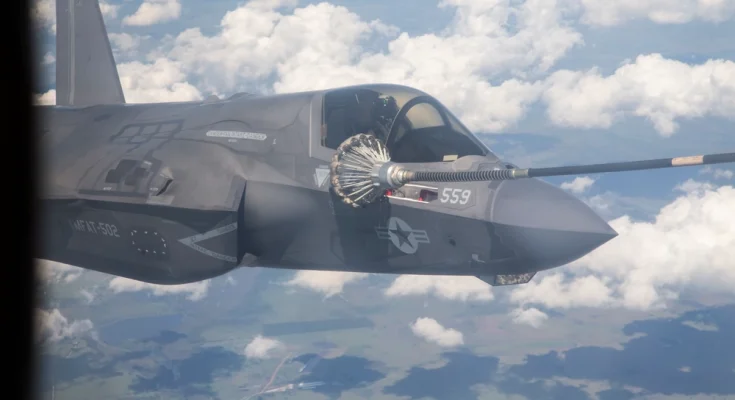In June 2016, the F-35B Lightning II achieved a historic milestone with its first transatlantic flight, demonstrating not only its long-range capabilities but also the effectiveness of aerial refueling for modern stealth fighters. This flight, which spanned over 4,000 miles from Marine Corps Air Station (MCAS) Beaufort in South Carolina to RAF Fairford in Gloucestershire, England, highlighted the versatility and operational readiness of the F-35B, a key member of the F-35 family designed for short takeoff and vertical landing (STOVL) operations.
Three U.S. Marine Corps F-35B jets were selected for the mission, marking the first time this variant of the F-35 had crossed the Atlantic. The aircraft were equipped with state-of-the-art systems for navigation, communications, and weapons integration, allowing them to complete the long-distance journey while staying in constant communication with the support crews on the ground and in the air. The mission’s success was largely facilitated by the use of aerial refueling, a crucial component that allowed the F-35Bs to cover the vast distance without the need for direct land-based fuel stops.
During the flight, two U.S. Air Force KC-10 Extender tanker aircraft provided aerial refueling support. The KC-10 is equipped with a probe-and-drogue refueling system, which is standard for U.S. Marine Corps and Navy aircraft. This system involves a drogue basket being deployed from the tanker, with the receiving aircraft’s probe connecting to the basket to transfer fuel. This method differs from the boom-and-receptacle system used by the U.S. Air Force but is widely employed for aircraft like the F-35B, which is often deployed from amphibious assault ships or other locations with limited infrastructure. Each of the three F-35Bs was refueled multiple times during the flight, with the tanker aircraft working in coordination to ensure the jets maintained their fuel levels throughout the journey.
The F-35B’s ability to perform short takeoff and vertical landing (STOVL) operations was a significant factor in the flight’s success. Unlike traditional fighter jets that require long runways for takeoff and landing, the F-35B can operate from shorter runways and even from aircraft carriers, making it an ideal asset for global operations. This capability gives it a distinct advantage in environments where traditional airbases may not be available, such as on naval vessels or forward-deployed locations.
The successful completion of this transatlantic flight showcased the F-35B’s potential to participate in international operations, enhancing its role in NATO defense and global peacekeeping efforts. It demonstrated that the F-35B could perform strategic long-range missions while maintaining its stealth and advanced capabilities, making it a valuable asset for modern air forces. The mission also demonstrated the efficiency and reliability of the U.S. military’s aerial refueling infrastructure, proving that the F-35B could integrate seamlessly into global defense operations.
Furthermore, this flight served as a critical demonstration of the F-35B’s operational readiness, further solidifying its position as one of the most advanced and versatile multi-role fighter aircraft in the world. As part of the U.S. Marine Corps and other international air forces, the F-35B is now capable of performing a wide range of missions, from conventional warfare to humanitarian assistance, all while maintaining a strategic presence anywhere in the world.
The success of this transatlantic flight not only showcased the F-35B’s long-range and aerial refueling capabilities but also marked the aircraft as an essential asset for modern aerial combat and global defense strategies.



